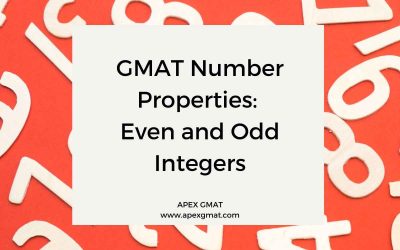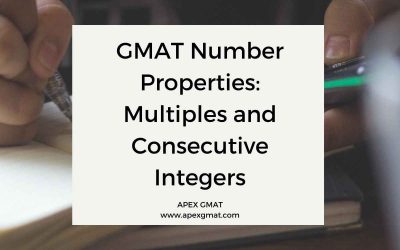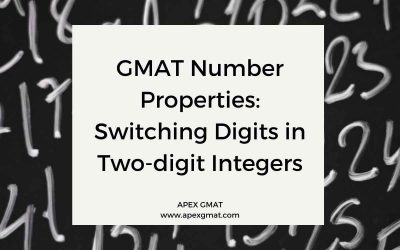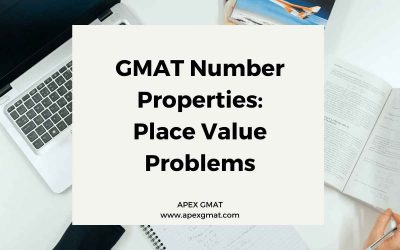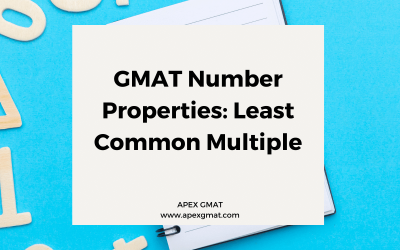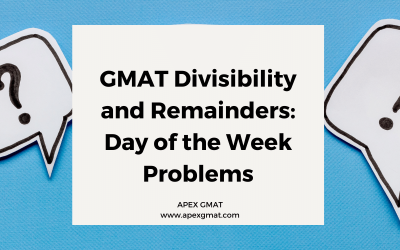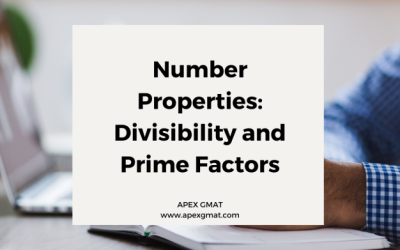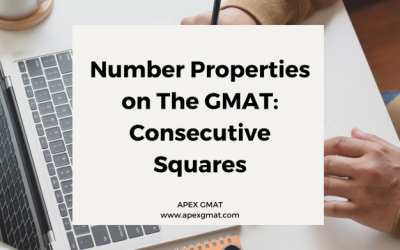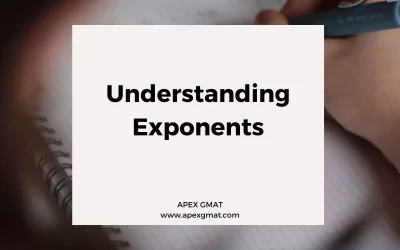Blog
Top Posts
GMAT Most Asked Questions 2025
If you're thinking about taking the GMAT or have already registered for a testing date, you undoubtedly have a ton of questions swirling around in your mind. In this blog post, we'll answer some of the GMAT FAQs in 2025. 1. What does GMAT stand for? The GMAT stands...
Best GMAT Prep Resources 2025
When preparing for the GMAT, the key to success lies in choosing the right resources. The GMAT is not just another test—it’s a stepping stone toward your future business career. The challenge? Navigating the sea of available prep materials to find what truly works....
7 Tips To Improve Your GMAT Quant Score
If you’ve experienced the GMAT, you may have noticed that your score is higher on some sections than others. Some otherwise strong business school candidates struggle with their score on the quantitative section. The problem might derive from preparation style, in...
All Our Posts
GMAT Number Properties: Even and Odd Integers
Welcome back to our series on number properties. This final article in the series will introduce some properties of even and odd integers that appear very frequently on GMAT quant. It’s not an overstatement to say that you should be looking for properties of evens and...
Number Properties: Multiples and Consecutive Integers
Welcome back to our series on number properties. The last two articles introduced GMAT quant problems that revolve around place value in multi-digit integers. This article returns to the “divisibility and factors” core of number properties. But now we are looking at...
GMAT Number Properties: Switching Digits
Welcome back to our series on number properties. In the last article, we learned about place-value problems. This article will cover the related topic of switching digits in two-digit integers. Here are some examples of what that means: Place-value problems 75...
GMAT Number Properties: Place Value Problems
Welcome back to our series on number properties. This article will introduce GMAT quant problems that revolve around the relationships between the digits of multi-digit integers. This topic can be tricky because we all know how the base-10 system works, but this...
GMAT Number Properties: Least Common Multiple
Welcome back to our series on number properties. In the last article, we learned how to find the greatest common factor/divisor of a set of integers. This article will cover the related topic of the least common multiple. Least common multiple The least common...
GMAT Divisibility: Day of the Week Problems
Welcome back to our series on number properties. In the last article, we introduced remainders. This time we will address my favorite use of remainders on GMAT quant: day of the week problems. Have you ever encountered a problem like this? Problems related to Days of...
GMAT Divisibility Rules
Welcome back to our series on number properties. Last time we got familiar with prime factors as the substance of divisibility. In this article, we will extend this understanding by highlighting logical rules that sometimes come into play on GMAT number properties...
GMAT Number Properties: Divisibility and Prime Factors
Welcome back to our series on number properties. In this article, we cover the heart and soul of number properties: divisibility, specifically as it relates to the prime factors of integers. Here’s the all-important fact: Divisibility boils down to shared primes....
GMAT Number Properties: Consecutive Perfect Squares
Welcome back to our series on number properties. In the last article, we explored the factors of perfect squares. This article will examine a special property of consecutive perfect squares. A commonly tested skill on the GMAT is the ability to recognize and...
Large Exponents and The Units Digit
Welcome to the final article in our series on exponents. Some GMAT and Executive Assessment (EA) quant problems feature impossibly large numbers like 287459. These are problems that you simply can’t hope to solve without a key piece of knowledge that we call units...
Exponents: Power of k Problems
Welcome to the penultimate article in our series on exponents on the GMAT/Executive Assessment (EA). Today we explore a problem category in which exponents are used to notating the highest power of an integer by which a larger integer is divisible. GMAT/EA problems...
Zeros and Nonzeros
Welcome back to our series on exponents. Last time we used powers of 10 to express “almost integer” numbers. Today we will use powers of 10 to handle problems that ask us to count zeros or nonzero digits. These problems can be baffling if you haven’t learned about...
“Almost an Integer” Problems
Unless you do math as a career or a hobby, you probably prefer integers to non-integers. Whole numbers are easier for us to conceptualize. But a certain class of GMAT/Executive Assessment (EA) problems involves numbers that are almost integers. Generally, this nearest...
Powers of 10 and Scientific Notation
Many GMAT and Executive Assessment (EA) exponents problems involve the use of 10 as a base. Since all the math we do is in a base 10 system, multiplying or dividing by powers of 10 simply moves the decimal point of a number. This enables us to notate very large and...
Exponent Properties in Data Sufficiency
Exponents have properties that make them ideal pieces for data sufficiency problems on the GMAT and Executive Assessment (EA) quant sections. We’ve surveyed most of these properties in our first four articles in this series, but a couple of key ones haven’t been...
Bases Between -1 and 1
Many GMAT and Executive Assessment (EA) exponent problems - especially data sufficiency ones - require you to consider fractional bases. By this I mean proper fractions with values between -1 and 1, not improper fractions whose numerators exceed their denominators....
Negative Exponents and Negative Bases
Welcome back to our series on exponents. Today we will see what happens when we throw negatives into our exponential expressions. We will explore both negative bases and negative exponents. First, the bases. The rule to remember for negative bases is that odd powers...
Undoing Exponents: Radicals and Roots
As you will definitively have to deal with radicals on the GMAT and Executive Assessment (EA), we've put together an article for you to master the topic. Addition is “undone” by subtraction, multiplication is “undone” by division, and the powers notated by exponents...
Understanding Exponents
A key piece of algebraic notation on GMAT and EA quant problems is the exponent. Exponents appear on many kinds of quantitative problems, so fluency with exponents (and radicals) is an indispensable skill for achieving a competitive quant score. Odds are, you already...
EA Prep Tips: How to Study Like an Expert
The Executive Assessment exam has become more and more popular among the MBA applicants lately. Many business schools require the exam, and for some of them it is optional. However, in both cases, a good score will make you more competitive and increase your chances...
Comprehensive GMAT Preparation
Step 1 – Complimentary Consultation
Step 2 – Assessment & Written Report
Step 3 – Work with a top scoring Apex trained instructor on your personalized prep plan.
Step 4 – Success
View our client success stories and find out how we position our clients to achieve and why we are the best choice for your success.
Book a Meeting Today!
Schedule a complimentary consultation call with one of our Instructors for Success with Apex . Act now as others have already done.



